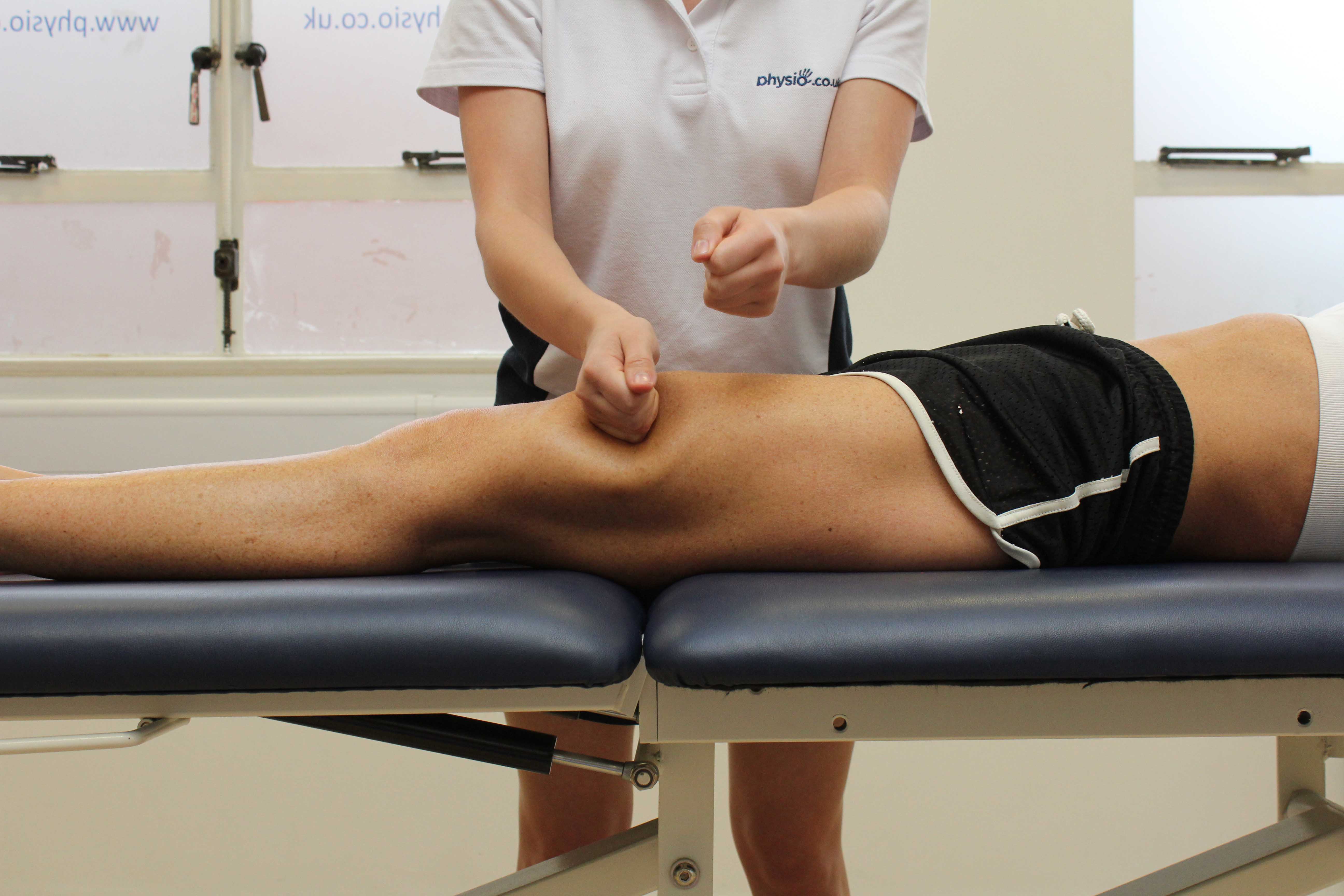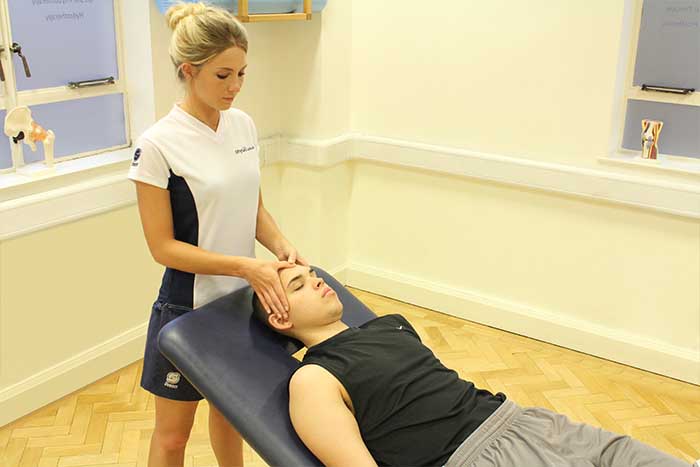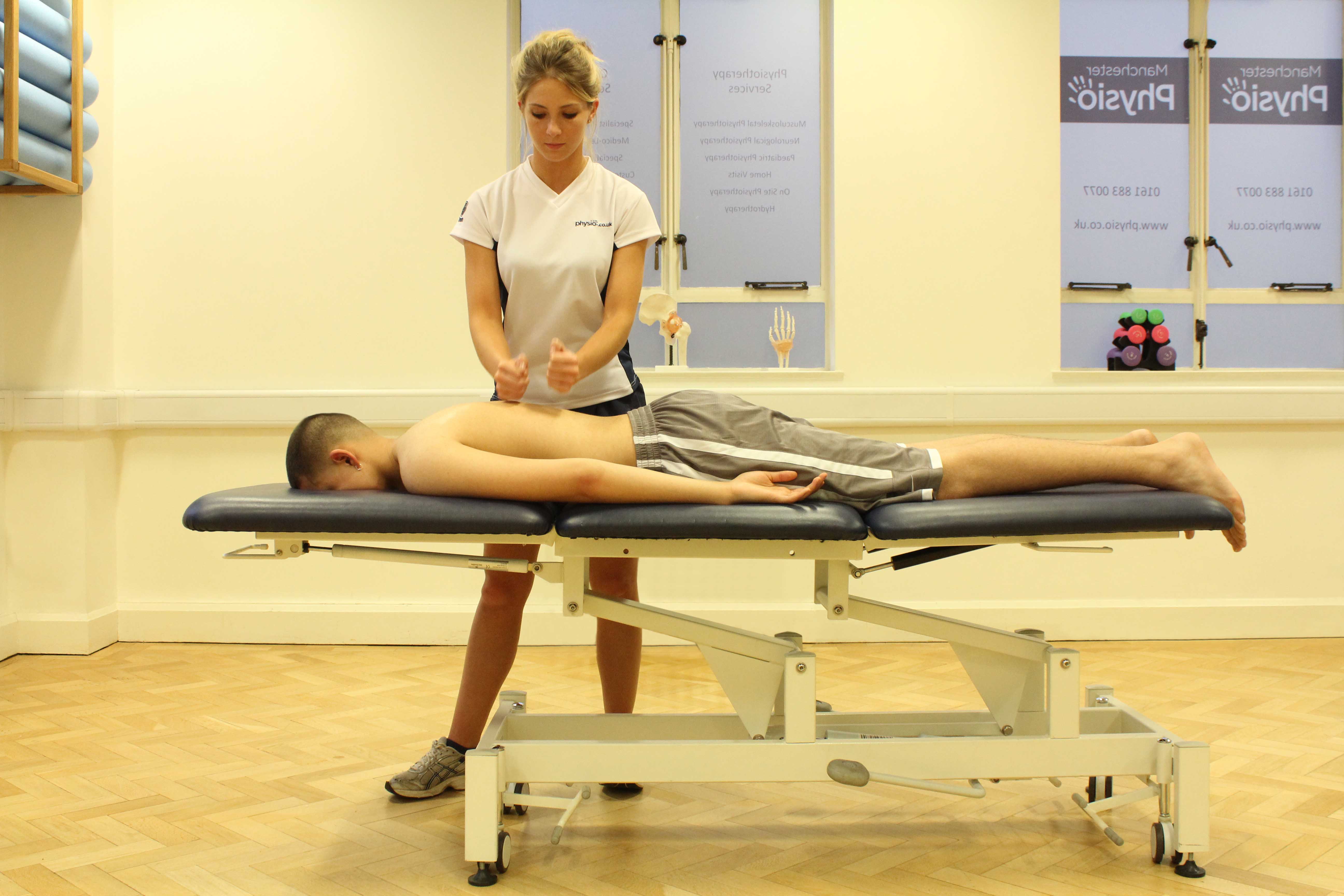Beating and pounding is a percussive technique used to produce stimulation. Beating and pounding involve a series of light, brisk, striking actions applied with clenched fists. Beating and pounding is a specific massage techniques used to stimulate muscles before exercise. Beating and pounding stimulates an increase of blood, temperature and tissue elasticity. Beating and pounding can be used effectively throughout a training programme to help maintain healthy muscles and prevent injuries from occurring. Massage therapists at Physio.co.uk can use beating and pounding as an effective massage technique to treat a range of conditions.
What is beating and pounding
Beating and pounding are heavier percussion movements. Beating and pounding is performed on larger muscle areas of the body, i.e. thighs or buttocks. This massage technique is performed by striking large muscle areas with loosely clenched fists. Beating and pounding aims to produce a deeper effect to an area compared to other percussion techniques. Beating and pounding is used to stimulate blood circulation to an area, reduce and soften areas of adipose tissue and increase muscle tone.
When is beating and pounding used?
Beating and pounding can be used on many circumstances.
 Above: Beating percussion massage technique applied to rectus femoris muscle
Above: Beating percussion massage technique applied to rectus femoris muscleBeating and pounding is a massage technique commonly used before exercise or sporting event. Beating and pounding stimulates the blood and can induce muscle tone preparing the muscles for activity. The stimulating movement of beating and pounding increases the blood to the surface of the skin, increasing temperature of the muscles and increasing circulation. Percussion massage techniques such as beating and pounding can increase tone of the muscles by stimulating them to contract. This technique prepares muscles for activity and helps to maximise performance and prevent injuries from occurring.
Beating and pounding can also be used as part of a training programme or leading up to an event. Beating and pounding massage techniques can help maintain healthy muscles throughout continuous training. Beating and pounding performed on the muscles before exercise stimulates readiness and prepares muscles for exertion. This preparation is vital to preventing injuries. Massage helps to prevent the chance of injury by increasing blood circulation, increasing temperature and increasing tissue elasticity. Massage techniques performed before exercise can help prepare the muscles and soft tissues for exercise. The more prepared the muscles are for exercise the less chance injury will occur.

What are the physiological effects of beating and pounding?
Massage can produce many important physiological effects on the body. The physiological effects of beating and pounding include:
 Above: Beating percussion massage technique applied to latissimus dorsi muscle
Above: Beating percussion massage technique applied to latissimus dorsi muscleBeating and pounding can help stimulate capillarisation in the blood. Capillarisation is the increase of number of capillaries which means an increase of blood flow. Capillarisation happens due to the friction and stimulating movements to the surface of the skin. The increase of capillaries in the blood also means there is an increase of oxygen in the muscles.
Beating and pounding also helps increase temperature. Beating and pounding can increase temperature by stimulating the surface of the skin. Stimulation across the skin causes capillarisation and vasodilation in the blood flow. Capillarisation and vasodilation in the blood flow allows an increase of blood to be delivered to the muscles. Increased blood circulation in the muscles allows the muscle fibres to loosen and be stretched.
Beating and pounding helps increase tissue elasticity in the muscle fibres. Beating and pounding increases tissue elasticity by increasing temperature and movement of the tissues. Increasing tissue elasticity is important in preventing injuries from occurring and maximising performance. Massage techniques such as beating and pounding increase temperature of the muscle allowing muscle fibres to loosen. Beating and pounding helps to stretch out muscle fibres and increase flexibility.

What are the benefits of beating and pounding?
Beating and pounding has many benefits. The benefits of beating and pounding include:
Beating and pounding is an effective massage technique to improve circulation. Beating and pounding is a percussion technique which is performed quickly onto larger muscle areas. The fast movements of beating and pounding stimulate capillarisation in the blood. Capillarisation is the increase of amount of capillaries in the blood. The more capillaries in the blood the quicker the oxygen and blood gets to the muscles. Improved circulation can be important to the body's overall health and function as well as being beneficial to participating in exercise.
Beating and pounding can be used to help stimulate nerves and improve sensation. Beating and pounding can be used to help an area where there is loss of nerve power. Beating and pounding movements can improve the function of a nerve by applying stimulation.
Beating and pounding can be beneficial to maximising performance. Beating and pounding performed before exercise stimulates blood circulation and prepares muscles for activity. Massage treatments can help people participating in sports to train more effectively, recover quickly, prevent injury and improve performance. Regular massage can be used to maintain optimum muscle elasticity and strength to avoid injury and allow peak performance to be achieved.
Common body parts treated by beating and pounding
There are many common body parts that can be treated with beating and pounding. Common body parts treated by beating and pounding are:
Beating and pounding can also be performed on other areas of the body and be effective to stimulate muscles and increase blood circulation.
Summary
Beating and pounding is a percussion movement that is used to produce stimulation. Beating and pounding is most commonly used across larger areas of muscles, i.e thigh, buttock or back. Beating and pounding can be used pre event and throughout a training programme. Beating and pounding is effective to prepare muscles for activity and help prevent injuries from occurring. Beating and pounding can produce many physiological effects on the body. The physiological effects of beating and pounding are increased capillarisation, increased temperature and increased tissue elasticity. Massage therapists at Physio.co.uk can use beating and pounding as an effective massage technique to treat a range of conditions.
How can I arrange a beating and pounding treatment?
The easiest way to arrange a beating and pounding treatment at Physio.co.uk is to email us at office@physio.co.uk or call us on 0800 033 7800.
Alternatively if you have any questions please feel free to contact us.
We offer a 7 day service and provide home and clinic appointments.

 0330 088 7800
0330 088 7800


































